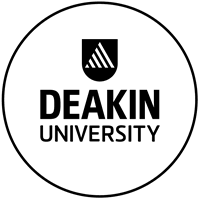About the Project
Applications now open. A PhD scholarship is available to initiate and conduct research on the topic 'The influence of submarine headlands on upwelling and bentho-pelagic productivity in the Bonney Coast upwelling system'.
We seek a highly motivated and independent PhD candidate to investigate the influence of submarine headlands on upwelling, bentho-pelagic productivity, and sedimentology in the Bonney Coast upwelling system. This project will build upon existing hydrodynamic data from the new IMOS mooring and CTD surveys by collecting complimentary benthic and pelagic biogeochemical data, and examining community productivity, trophic linkages, and food web dynamics. Outputs from the project will assist in the calibration and validation of hydrodynamic, biogeochemical and ecosystem models for the Bonney Coast, which will promote knowledge-based sustainable management of marine resources and assist industry to optimise harvest strategies and maximise profitability. In addition, new insights into the influence of the above processes on seafloor sediment composition will improve interpretation of the sedimentary rock record.
Fieldwork will be undertaken on routine mooring servicing voyages. Sediment and water samples will be processed and analysed to investigate variations in:
- Nutrient concentrations (NOx, NH4, PO4, Si)
- Microbes (Abundance of viruses, bacteria, picophytoplankton)
- Pigments (size fractionated >/<5µm, HPLC)
- Phytoplankton (standard taxonomic methods)
- Zooplankton (standard taxonomic methods)
- Suspended solids (PIM/POM/TSS)
- Carbonates (TCO2, TAlk)
- Documentation of calcareous benthos (samples and seafloor imagery) at specific sites as related to upwelling and downwelling
Community productivity, trophic pathways, and food web dynamics will be examined using such methods as stable isotope analysis, radioisotope uptake, and Fast Repetition Rate Fluorometry (FRRF). Sedimentology studies will include seafloor mapping, assessments of seafloor sediment composition and geochemistry (mineralogy, trace elements, stable isotopes), with sediment ages determined by radiometric dating.
The Bonney Coast encompasses shelf waters between Cape Jaffa in South Australia and Cape Otway in Victoria and hosts a strong seasonal upwelling that supports one of the most productive marine regions in Australian coastal waters. The region is of high ecological and economic importance to South Australia and Victoria. It supports large populations of Blue and Southern Right whales, Australian fur seals, pelagic sharks, and southern blue-fin tuna, together with important State (southern rock lobster, giant crab, abalone) and Commonwealth (small pelagic, south east trawl, shark and scale-fish) fisheries, and a growing charter fishing industry. A deeper understanding of the physical, chemical, and biological mechanisms that underpin this highly productive region, and the relevance of this area to species of ecological importance as well as commercial interest, will promote the sustainable management of its ecosystems and fisheries. Furthermore, the region is part of the largest area of temperate carbonate sedimentation on the planet, and is thus of profound interest to earth scientists around the globe.
The Bridgewater region is a particularly productive area of the Bonney Coast. It is characterised by deep shelf-break canyons that likely play significant role in shaping the hydrodynamics of the upwelling that underpins bentho-pelagic productivity in the region. Shelf topography off Cape Bridgewater is far from uniform, and is dominated by one of the seven pairs of gentle submarine headlands and valleys that characterise the Otway shelf. Recent idealised modelling studies have indicated that wind driven currents in the area are characterised by very strong near-bottom upwelling (~ 20 - 40 m/day) into valleys, and on the equatorward flanks of submarine headlands. Over top of headlands, equally strong downwelling occurs. Sea glider observations support this scenario.
The Integrated Marine Observing System (IMOS) has recently established a hydrodynamic mooring southwest of Portland, through a collaboration between Deakin University (VicIMOS) and SARDI Aquatic Sciences (SAIMOS). It consists of an upward looking ADCP, a CTD (@ ~90 m), and a thermistor string to a SeapHOx (CTD) at 40 m, and is serviced twice yearly (Dec/Jan, Jun/Jul). CTD profiles are collected along a cross shelf transect of five stations during each mooring servicing.
Benefits
This scholarship is available over 3 years.
Stipend of $28,092 per annum tax exempt (2020 rate)
Relocation allowance of $500-1500 (for single to family) for students moving from interstate or overseas
International students only: Tuition fees offset for the duration of 4 years. Single Overseas Student Health Cover policy for the duration of the student visa.
Eligibility criteria
To be eligible you must:
be either a domestic or international candidate
meet Deakin's PhD entry requirements
be enrolling full time and hold an honours degree (first class) or an equivalent standard master's degree with a substantial research component.
Please refer to the research degree entry pathways page for further information.

 Continue with Facebook
Continue with Facebook

